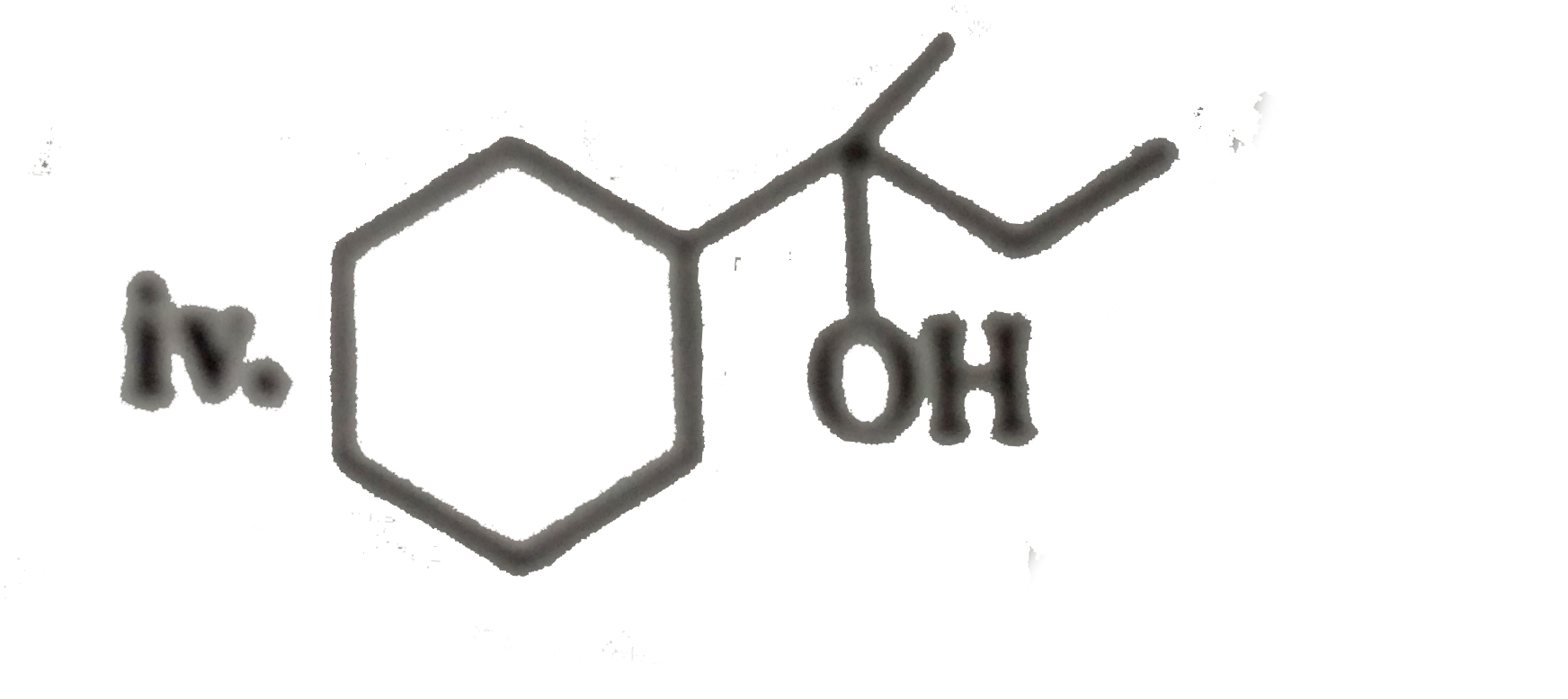Complete Solutions to NCERT Exercise of chapter ALCOHOLS AND PHENOLS of Class 12 book with complete answers and questions
| Class 12 | CHEMISTRY |
| Chapter | ALCOHOLS AND PHENOLS |
| DINESH COMPANION CHEMISTRY | NCERT Exercise |
| Number Of Questions | 23 |
| Academic Year | 2023-24 |
Write IUPAC names of the following compouns :

View SolutionWrite structures of the compounds whose IUPAC names are as follows:
`{:("(i) 2-Methylbutan-2-ol","(ii) 1-Phenylpropan-2-ol"),("(iii) 3,5-Dimethylhexane –1, 3, 5-triol","(iv) 2,3 – Diethylphenol"),("(v) 1 – Ethoxypropane","(vi) 2-Ethoxy-3-methylpentane"),("(vii) Cyclohexylmethanol","(viii) 3-Cyclohexylpentan-3-ol"),("(ix) Cyclopent-3-en-1-ol","(x) 4-Chloro-3 ethylbutan-1-ol."):}`
View Solutioni. Draw the structures of all isomeric alcohols of molecular formula `C_(5)H_(12)O` and give their IUPAC names.
ii. Classify the isomers of alcohols in Q.No.3 (i) as primary, secondary, and tertiary alcohols.
View SolutionExplain why propanol has a higher boiling point than hydrocarbon butane ?
View SolutionAlcohols are comparatively more soluble in water than hydrocarbons of comparable melecular masses. Explain this fact.
View SolutionWhat is meant by hydroboration-oxidation reaction ? Illustrate it with an example.
View SolutionGive the structures and IUPAC names of monohydric phenols of molecular formula, `C_(7)H_(8)O`.
View SolutionWhile separating a mixture of ortho- and para-nitrophenols steam distillation, name the isomer which will be steam volatile. Give reason.
View SolutionGive the equations of reaction for the preparation of phenol form cumene.
View SolutionWrite the chemical reaction for the preparation of phenol form chlorobenzene.
View SolutionWrite the mechanism of hydration of ethene to yield ethanol.
View SolutionYou are given benzene, conc. `H_(2)SO_(4)`, and NaOH. Write the equations for the preparation of phenol usign these regents.
View SolutionShow how will you synthesise:
i. 1-Phenylethanol form a suitable alkene.
ii. Cyclohexylmethanol using an alkyl halide by `SN^(2)` reaction.
iii. Pentan-1-ol using a suitable alkyl halide.
View SolutionGive two reactions that show the acidic nature of phenol. Compare the acidity of phenol with that of ethanol.
View SolutionExplain why si orthonitrophenol ?
View SolutionExplain how does the `(-OH)` group attached to a carbon of benzene ring activate it towards electrophilic substitution.
View SolutionGive the equations of the following reactions:
i. Oxidation of propan-1-ol with alkaline `KMnO_(4)` solution.
ii. Bromine in `CS_(2)` with phenol.
iii. Dilute `HNO_(3)` with phenol.
iv. Treating phenol with chloroform in the presence of aqueous NaOH.
View SolutionExplain the following with an example:
i. Kolbe's reaction
ii. Reimer-Tiemann reaction
iii. Williamon's ether synthesis
iv. Usymmetrical ether
View SolutionWrite the mechanism of dehydration of ethanol.
View SolutionHow are the following conversions carried out ?
i. Propene `rarr` Propan-2-ol
ii. Benzyl chloride `rarr` Benzyl alcohol
iii. Ethyl magnesium chloride `rarr` Propan-1-ol
iv. Methyl magnesium bromide `rarr` 2-Methylpropan-2-ol
View SolutionName the reagents used in the following reactions:
i. Oxidation of a primary alcohol to carboxylic acid.
ii. Oxidation of a primary alchol to aldehyde.
iii. Bromination of phenol to 2,4,6-tribromonophenol.
iv. Benzyl alcohol to benzoic acid.
v. Dehydration of propan-2-ol to propene.
vi. Butan-2-one to butan-2-ol.
View SolutionShow how would you synthesisse the following alcohols form approprite alkenes.
i. ii.
ii. 
iii. iv.
iv. 
View SolutionWhen 3-methylbutan-2-ol is treated with HBr, the following reaction takes place:
`CH_(3)-underset(CH_(3))underset("| ")("C ")H-underset(OH)underset("| ")("C")H-CH_(3)overset(HBr)rarr CH_(3)-overset(Br)overset("| ")underset(CH_(3))underset("| ")("C ")-CH_(2)-CH_(3)`
Give a mechanism for this reaction.
(Hint : The secondary carbocation formed in step II rearranges to a more stable tertiary carbocation by a hydride ion shift from 3rd carbon atom.
View Solution
NCERT Exercise questions and complete solutions for chapter ALCOHOLS AND PHENOLS of S DINESH & CO CHEMISTRY (HINGLISH) of Class 12